Yoshihiro Murata is the third-generation chef/owner of Kikunoi, a kaiseki restaurant in Kyoto that also has a branch in Tokyo, and a related restaurant in Kyoto which serves kappo style food (i.e. the same food but at a counter rather than in a private tatami room). As a young man Yoshihiro decided initially to train as a French chef, and went off to France for six months, but on his return changed his mind and entered the family business as a Japanese chef.
The Kikunoi restaurant nestles on a hillside overlooking Kyoto, not far from the trendy Gion district. It is traditional: you take your shoes off as you enter and are taken to a private room, decorated just with a simple flower display and a scroll of calligraphy on one wall; there is sunken bench seating, and the room has a view of a simple private garden. Service is from traditionally garbed waitresses, ours being completely charming and, despite initially saying "I speak no English", proceeded to converse entirely capably in it.
The meal began with a dish of walnut tofu, a cold dish made with toasted ground walnuts, ground white sesame seeds Kumagawa bon-kuzu with dashi stock, which is strained and then simmered until it thickens. This base is then enhanced with chopped toasted walnuts and oil, and allowed to firm up in the fridge. For serving, grapes are added, as well as, crucially, wasabi jelly and a garnish of shiso flower buds. The wasabi gave an agreeable bite to the dish, while the walnuts contrasted nicely in texture to the jelly (17/20).
Next was a prettily presented set of appetisers, enclosed in a little wooden cage apparently once designed to house crickets. Grilled barracuda sushi was grilled before being presented with rice, alongside pike conger roe cake, vinegared grilled pike conger eel, salted ayu (sweetish) milt and roe, trout roe presented in a beautifully carved hollowed-out lime, tea needles shaped into pine needle form, sweet potato shaped to appear in the shape of a gingko leaf, grilled chestnut and sake-glazed gingko nuts. I was particularly impressed with the quality of the chestnut, which had superb flavour, while there was a nice balance to the overall dish (17/20).
Next was sashimi of red sea bream and young yellowtail, served with ponzu jelly, vinegared chrysanthemum flowers and wasabi. While the accompaniments were fine, I found the sashimi itself to be chewy to the point of being unpleasant. I do not really know how to score this dish, since I don't doubt that the fish was carefully chosen and was supposed to be like this, but to my western palate it was practically inedible.
To follow this was something more to my taste, sashimi of tuna, both the regular red meat of bluefin and the fatty toro, served with a little Japanese mustard placed on each piece of fish; this was of very high quality (18/20).
Next was harvest soup, whose main ingredient is a local fish called hamo. The soup is made from toasted rice that is then simmered, to which is added matsutake mushrooms. The hamo is crusted with toasted rice, deep fried and simmered in a broth, then decorated with warmed egg tofu, mibuna greens, matsutake mushrooms and the grilled fish, the soup poured over and finally garnished with yuzu peel. I am not sure that deep-frying a fish and then placing it in liquid is optimal, but the flavours were certainly good (16/20).
The next course was a pair of salt-grilled ayu (sweetfish, a freshwater fish that feeds on aquatic plants, in this case from the Ado river), which are eaten whole (and by the way, the head is anything but sweet, but rather quite bitter, but the main body has a hint of sweetness). These were served with mountain potato skewered on pine needles with water pepper vinegar. The nicest feature of this dish for me was the lovely smell of the charcoal on cherry blossom leaf that was used to grill the fish; this imparted an attractive smell to the fish, which in itself I found unremarkable (I ate better ayu later on this trip), though it was well seasoned (16/20).
The next dish was matsutake mushroom and mizuna leaf, served with muscat grapes marinated in mustard and aged rice (koji), alongside coarse-ground mustard, persimmon and tofu, with pomegranate. The combination of grape and mustard was interesting and worked well, and the mushrooms were clearly of good quality. However I would observe that the persimmon (Sharon fruit) was not remotely as good quality as the one two nights previously at Mizai. Overall 16/20.
We moved on now to shabu-shabu style cooking, where you are brought a little gas burner which heats up a bowl of stock. You then place the ingredients yourself into the stock and cook them briefly. In our case we had pike conger eel with matsutake mushrooms, mizuna, sudachi citrus, ponzu with grated radish, hot pepper and green onion. I find the idea of cooking your own food in a restaurant mildly amusing (next the chefs will just leave a shopping bag of ingredients at the door and the key to the kitchen), but is actually quite fun to do, and the mushrooms were fine. However I really question whether boiling is the best method of preparing strips of fish, which results in a rather dull taste. As I recall, boiling fish is what was sometimes done in Scandinavia in times gone by (as referenced by the wonderful movie Babette's Feast), and it has not exactly swept the world as the optimal cooking technique for fish (15/20).
The final savoury course was rice with little pieces of chicken and chestnut and a little aubergine pickled in rice bran, alongside a nice peppery lily bulb soup and excellent pickles (in particular the pickled cucumber was terrific). However what you have here is, after all, just some bits of chicken in a bowl of rice, hardly something to get excited over (14/20).
The dessert course was pieces of giant grape and poached fig. with Ceylon tea granite and Earl Grey jelly. The fig and grape were fine, though again not remotely of the same quality as I tasted two nights earlier at Mizai (15/20).
The bill was ¥52,140 for two in total (£198 a head). Overall this was a meal that clearly had a lot of thought put into it, seasonal ingredients of high quality and good technical execution applied (excepting the shabu shabu course, where the customer is the cook). It was certainly better than many kaiseki meals that I have eaten, but even the best dish this evening lacked any real excitement for me. The setting was pretty and the service charming, but it was hard for me to really get engaged with the cooking.

-
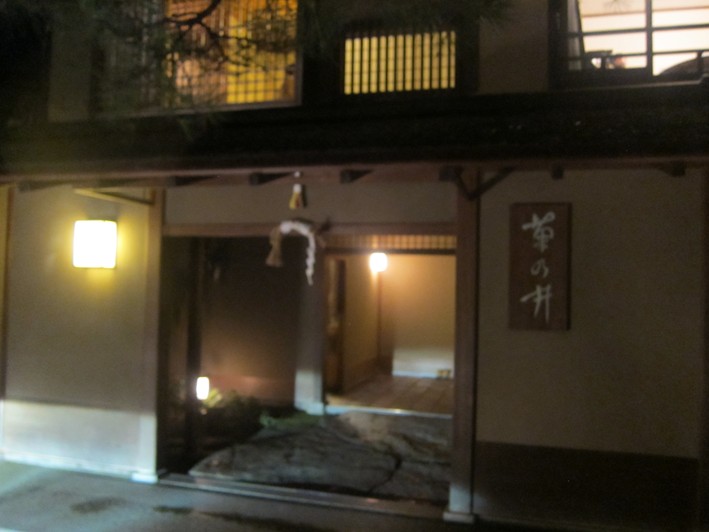 entrance
entrance

-
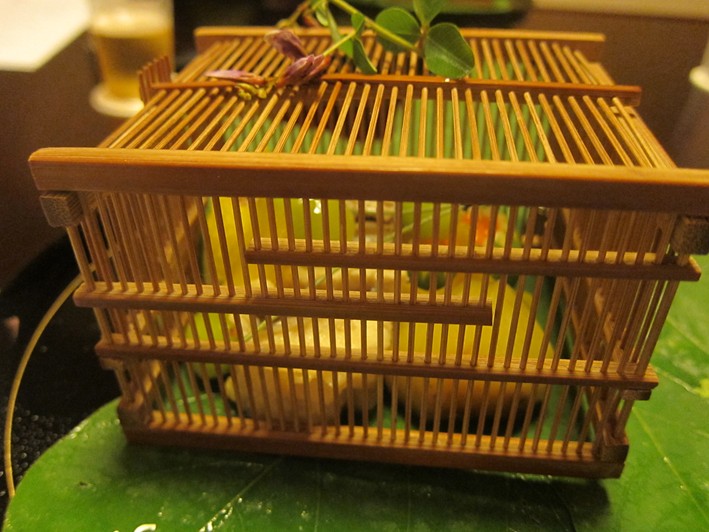 appetisers
appetisers

-
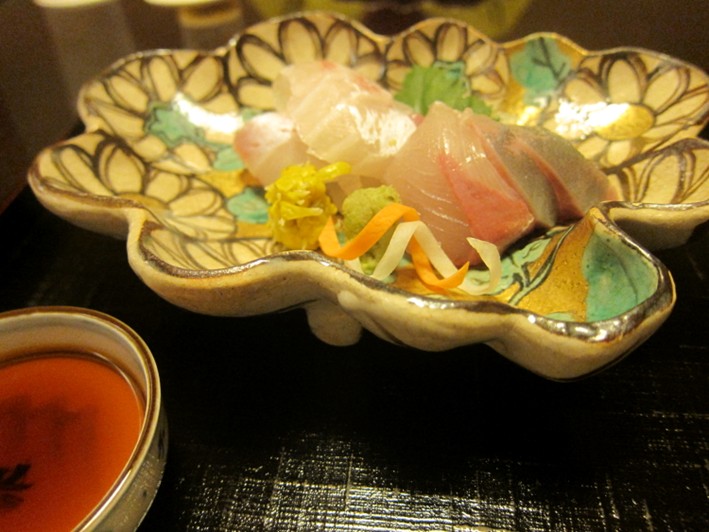 sashimi red bream
sashimi red bream

-
 harvest soup
harvest soup

-
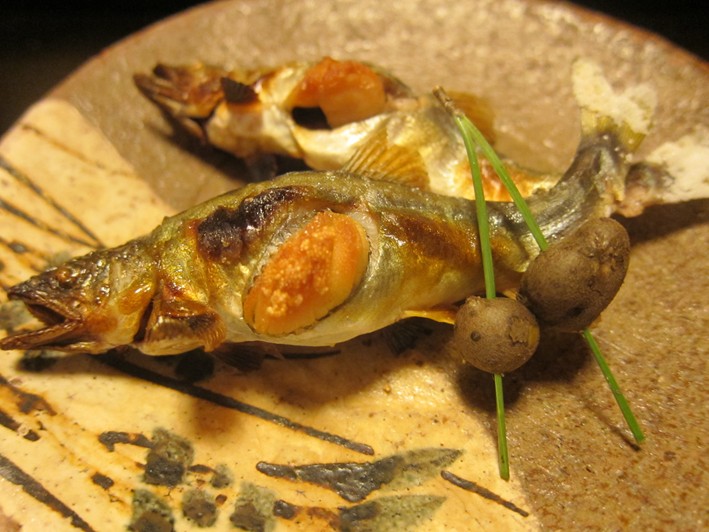 ayu
ayu

-
 sashimi tuna
sashimi tuna

-
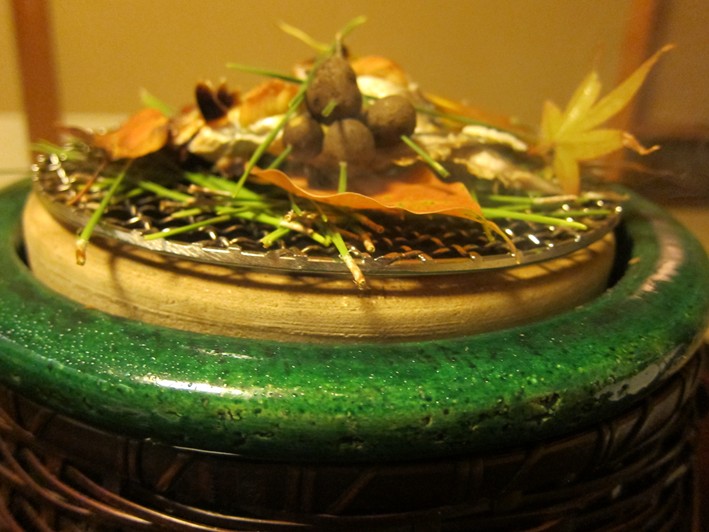 hibachi grill
hibachi grill

-
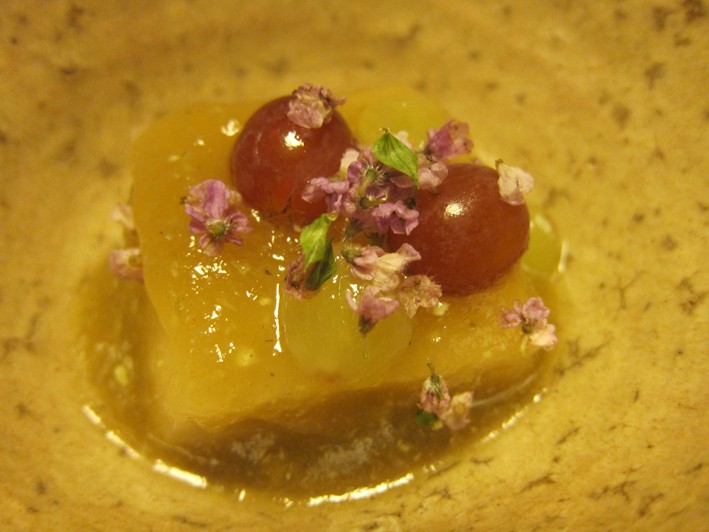 walnut tofu
walnut tofu

-
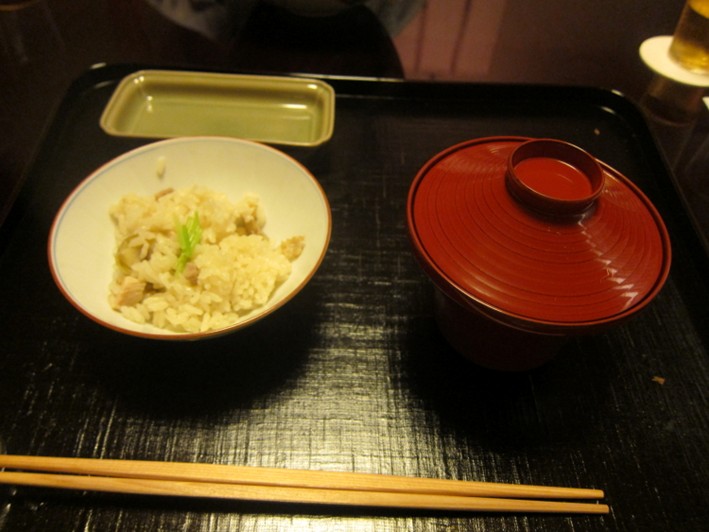 rice
rice

-
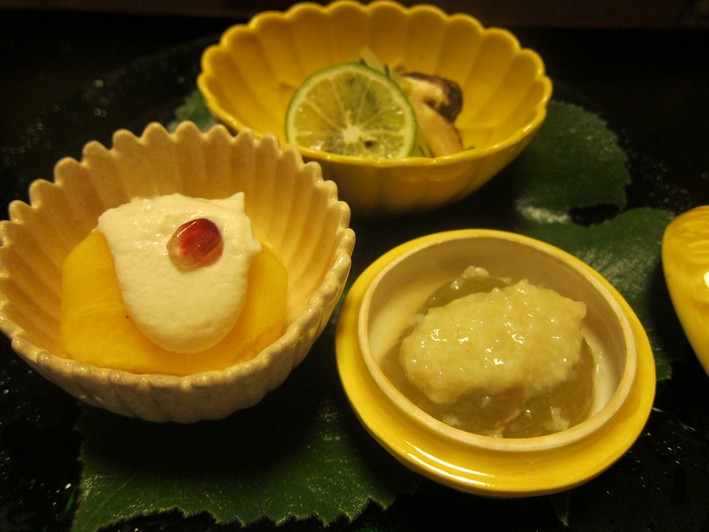 desserts
desserts

-
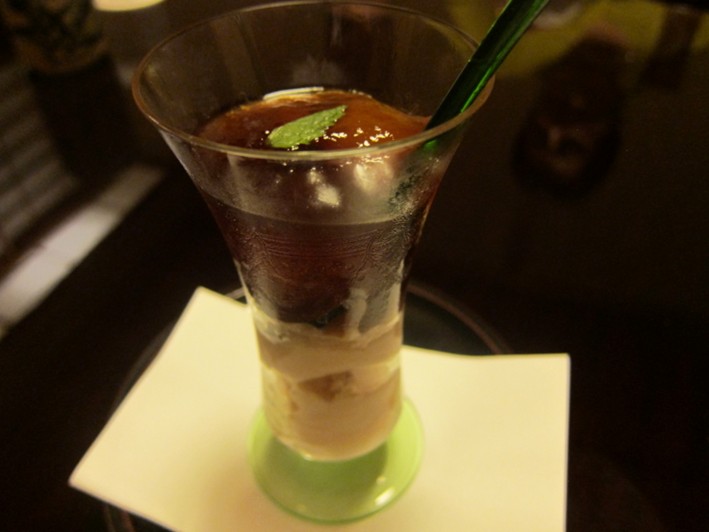 grape and fig
grape and fig

Japanese cuisine
 Average Price £200
Price I paid £198
Value for money
££££££
Overall rating 16/20
Michelin star
Average Price £200
Price I paid £198
Value for money
££££££
Overall rating 16/20
Michelin star

The type of cuisine served at this restaurant
Typical price for three courses and modest wine
What I actually paid on this particular visit
Calculated from overall rating/average price: £££££ is best, £ least good
Score for the food from 1 to 20, with 20 being world class
Currently has at least one Michelin star












Add a comment
Thank you for submitting your comment, this will be checked and added to the website very soon.
User comments